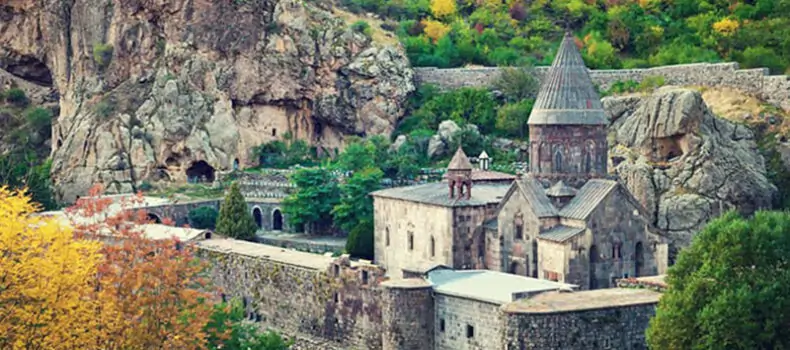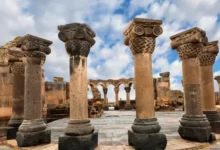Everything about the history of Armenia

Armenia is one of the most popular tourist destinations in the world, with a long and rich history and an ancient civilization. Therefore, this country is full of valuable historical sites that can make your visit fascinating. Familiarizing yourself with the history and culture of a country can be very useful and valuable before purchasing plane tickets and traveling there. In this article from the travel magazine “Nnabtrip,” we intend to provide you with information about the history of Armenia that can capture your attention and make you curious to travel to Armenia and learn more about its history and culture.
Introduction to the History of Armenia
Before delving into the history of Armenia, we would like to provide you with some general information about the country and its current situation. The Republic of Armenia is a country neighboring our country, Iran, and due to its close geographical proximity, many of our compatriots show great interest in traveling to it. The largest city and capital of this country is Yerevan. Other major cities in Armenia include Vanadzor, Gyumri, and Abovyan. The currency of this country is the dram. Moreover, this country is known by its national name, Hayastani Hanrapetutyun. The official language of the Republic of Armenia is Armenian, but there is a minority in this country that speaks the Kurdish language. The majority of the population in this country is of Armenian ethnicity, but there are also minorities of Kurdish Yazidis and other ethnic groups living in this country. The official religion of this country is Armenian Christianity, and the people of Armenia celebrate September 21st, known as the Independence Day of Armenia, as a national holiday.
Geography of Armenia
This country, considered the smallest republic to have emerged from the former Soviet Union, is located in the South Caucasus. Among its neighboring countries are Georgia to the north, Azerbaijan to the east, Iran to the south, and Turkey to the west. The country we currently know as Armenia is only a fraction of the ancient Armenia that existed in the past. This country is characterized by rugged mountain ranges and dormant volcanoes, making it an attractive destination for nature enthusiasts. The highest mountain range in Armenia is Mount Aragats, which stands at an elevation of 4,095 meters.
Everything about the history of Armenia
Armenia is one of the oldest civilizations in the world, to the extent that it even includes the Ararat Mountains. According to historical accounts, Mount Ararat is a sacred mountain where Noah’s Ark came to rest after a devastating flood. Around 300 AD, Armenia was the first country to officially adopt Christianity as its state religion and recognize it. In Armenian history, it is mentioned that in the 6th century BC, Armenians settled in the Kingdom of Urartu. This kingdom was in decline. During the Tigranes period, Armenia reached its peak and was recognized as one of the most powerful realms in Asia, spanning from the Caspian Sea to the Mediterranean. Throughout most periods of Armenian history, we witness that the country has been subjected to invasions and attacks by various empires.
The Armenian Genocide by the Ottoman Turks
Armenians have constantly been either under external attacks or faced internal adversaries throughout Armenian history. This country has been conquered numerous times by different races, including Greeks, Romans, Persians, Byzantines, Mongols, Arabs, Ottoman Turks, and Russians. One of the most difficult periods in Armenian history can be considered when the most savage invader they had ever encountered gained control over them. These invaders were the Ottoman Turks, who ruled over Armenians from the 16th century until World War I. During this period, Armenians faced immense pressure. They were subjected to ruthless persecution, forced to pay heavy taxes, and faced frequent armed attacks. Many Armenians were ruthlessly massacred by these Turks, particularly during the years 1894 to 1896.
During World War I, the horrific Armenian Genocide by the Ottoman Turks took place in April 1915. During that time, the Armenian people were forcibly displaced from their homes and homeland and were exiled to the deserts of Syria and Mesopotamia. Historians estimate that during this period, between 600,000 to 1.5 million Armenians were killed or died from starvation and harsh conditions. This ruthless massacre of Armenians by the Ottoman Turks is referred to as the first genocide of the 20th century.
Armenian Attempts for Independence
When the country of Turkey was defeated in World War I, Armenia declared its independence on May 28, 1918. However, it didn’t last long as on March 12, 1922, the Soviet Union was formed after the incorporation of Georgia, Armenia, and Azerbaijan. In 1936, Armenia reorganized itself and separated from this union, reclaiming its own identity. On September 23, 1991, Armenia declared its independence for the second time in Armenian history. In 1998, conflicts erupted between the Republic of Azerbaijan and Armenia over the mountainous region of “Karabakh.” The majority of the people living in this region were Armenian Christians and wanted to join Armenia or separate from the Republic of Azerbaijan altogether. This conflict lasted from 1992 to 1994, resulting in 30,000 casualties. Today, despite the absence of any official resolution, this region is under the control of Armenia.





